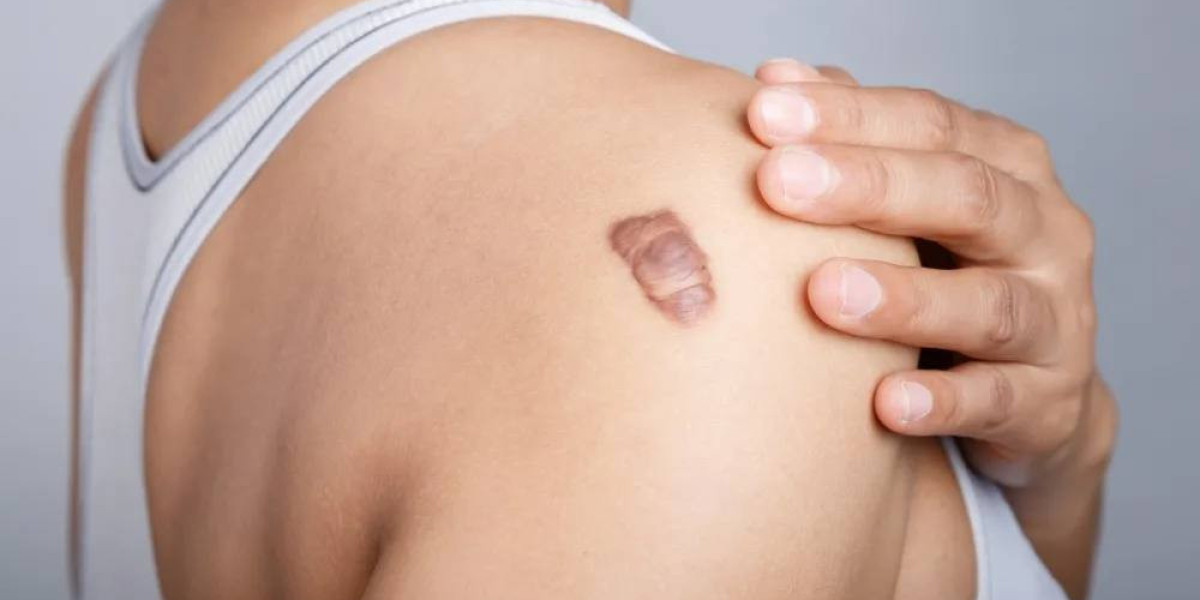Keloids are a unique skin condition that can affect individuals at any stage of life. These raised, thick scars often form after injuries, acne, burns, or surgical cuts. While some people can live with them, others experience discomfort, itching, or even pain. Many also find keloids emotionally distressing because of their appearance. With advancements in dermatology, modern Keloid Treatment in Islamabad has become more effective and widely available. But a key question arises: what is the best age to undergo this treatment?
Understanding Keloid Formation
Keloids are the result of an overproduction of collagen during the healing process. Instead of forming a flat, faded scar, the tissue continues to grow beyond the wound’s boundaries. They may appear weeks or even months after an injury. Common triggers include:
Ear piercings
Cuts, burns, or surgical incisions
Acne scars
Vaccination marks
Skin trauma from injuries
Since keloids are not limited to any age group, they can affect both children and adults. However, age does play a role in determining when treatment is most suitable.
Why Age Matters in Keloid Treatment
When discussing the best age for treatment, dermatologists often consider the following:
Skin Maturity: Younger skin heals differently than older skin. Children and teenagers may develop new keloids if the skin continues to undergo changes.
Recurrence Risk: Early treatment in younger individuals sometimes leads to regrowth because their skin is still highly active.
Emotional Well-Being: Teenagers or young adults may seek treatment earlier due to self-esteem concerns, especially if keloids are visible on the face, chest, or hands.
Lifestyle Factors: Adults may delay treatment due to work, cost, or time constraints, but older age may also affect healing capacity.
Keloid Treatment in Children
Children can develop keloids from cuts, chickenpox scars, or even vaccination marks. While treatment is possible, most dermatologists recommend a conservative approach in younger children unless the keloid is:
Causing pain or severe itching
Growing rapidly
Restricting movement in areas like the neck, joints, or shoulders
Non-invasive treatments such as steroid creams or injections are often preferred for children to minimize risks. Surgical removal is usually avoided at this age, as recurrence rates can be high.
Teenagers and Keloid Treatment
Teenagers are particularly prone to keloids due to acne scars, piercings, or sports-related injuries. This stage is also when self-esteem and appearance matter significantly.
Pros: Teenagers often seek treatment for cosmetic reasons, and early intervention can prevent larger scars from forming.
Cons: Since the skin is still undergoing changes, recurrence may occur. Dermatologists usually recommend combination therapies like steroid injections with silicone sheets for better long-term results.
Young Adults (20s to 30s): The Ideal Age for Keloid Treatment
Most dermatologists agree that the best age range for keloid treatment is young adulthood. By this time, the skin has matured, and growth-related hormonal changes have stabilized.
Why This Age is Best:
Stable Skin Regeneration: Healing is more predictable in adults compared to teenagers.
Better Treatment Options: Adults can safely undergo laser therapy, cryotherapy, or even surgical removal if needed.
Emotional Confidence: At this age, appearance plays a significant role in careers, social life, and relationships. Treating keloids boosts self-esteem.
Long-Term Results: With proper aftercare, the recurrence risk is lower compared to children or teenagers.
This age group benefits most from advanced dermatological techniques, making it an ideal time to seek treatment.
Middle Age (40s to 50s) and Keloid Treatment
By middle age, skin loses some elasticity, and healing may take longer. However, treatment is still highly effective.
Advantages: Mature patients are less prone to recurrence, and their skin tends to respond well to non-invasive therapies like laser or steroid injections.
Challenges: Healing after surgical removal may take longer, and underlying health conditions (like diabetes or hypertension) can influence results.
Older Adults (60s and Above)
Elderly patients can still undergo keloid treatment, but dermatologists typically weigh the benefits against possible risks.
Pros: Reduced likelihood of recurrence because the skin’s healing activity slows down.
Cons: Healing may take more time, and patients may be at greater risk of complications due to age-related health issues.
Treatment in this age group is usually considered if the keloid causes pain, functional limitations, or severe cosmetic concerns.
Treatment Options Available in Islamabad
Modern dermatology clinics in Islamabad provide a range of treatments tailored to different age groups:
Steroid Injections: Reduce inflammation and flatten keloids.
Cryotherapy: Freezes small keloids, making them shrink over time.
Laser Therapy: Improves texture and reduces redness.
Surgical Removal: Reserved for large or stubborn keloids, often combined with other treatments to prevent recurrence.
Silicone Gel Sheets: Used post-treatment for prevention.
Combination Therapy: A mix of treatments to maximize results and minimize regrowth.
Factors to Consider Before Choosing Treatment
When deciding the right time for keloid treatment, consider:
Severity of the scar – Is it growing, painful, or affecting mobility?
Emotional impact – Does it affect confidence or social life?
Age and healing capacity – Will the body respond well to treatment?
Doctor’s advice – Always consult a dermatologist to select the safest and most effective method.
Aftercare is Crucial at Any Age
Regardless of age, proper aftercare ensures long-lasting results. Dermatologists usually advise:
Avoiding unnecessary trauma to the skin
Applying prescribed creams or silicone sheets
Protecting scars from sun exposure
Attending follow-up appointments regularly
These steps reduce the chances of recurrence and help maintain smoother skin.
Final Thoughts
There is no single "perfect" age for keloid treatment—it depends on the individual’s condition, lifestyle, and personal needs. However, young adulthood (20s to 30s) is generally considered the best time, as the skin is mature enough to respond well and recurrence risks are lower. Children and teenagers may require treatment if the keloid causes pain or rapid growth, while older adults can still benefit from modern procedures if health allows.


